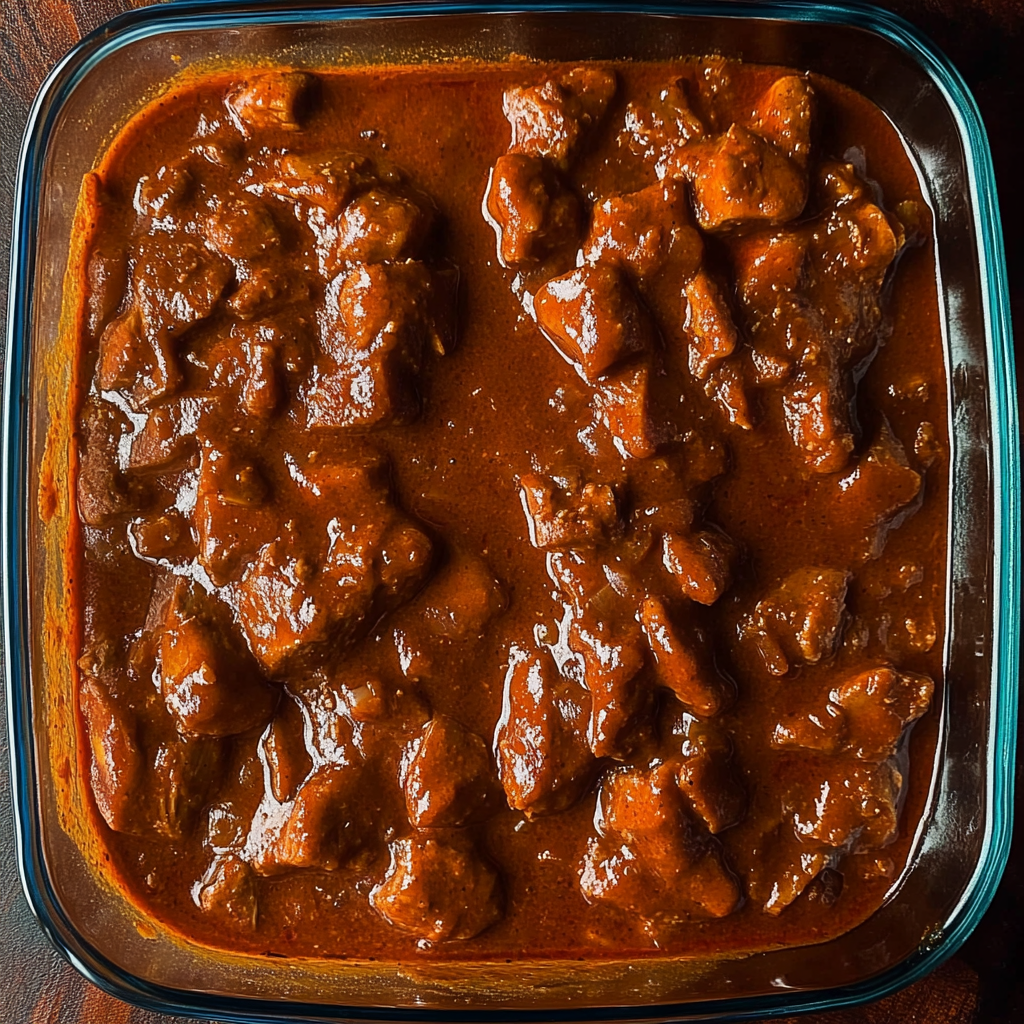
Carne Adovada (New Mexican Stewed Pork): A Rich and Flavorful Classic
Carne Adovada is a treasured dish from New Mexico, featuring tender pork slow-cooked in a deeply flavorful, smoky, and mildly spicy red chili sauce. This hearty stew is perfect comfort food and pairs beautifully with warm tortillas, rice, or even roasted vegetables. Ready to bring a taste of the Southwest to your kitchen? Here’s how to make authentic Carne Adovada from scratch.
Ingredients
For the Chili Sauce:
- 6 dried New Mexico chilis
- 4 dried ancho chilis
- 6 garlic cloves
- 3 tablespoons white vinegar
- 1 tablespoon honey
- 1½ teaspoons Mexican oregano
- 1½ teaspoons ground cumin
- 1 teaspoon salt (plus more for seasoning pork)
- ½ teaspoon cayenne powder
- ⅛ teaspoon ground cloves
For the Pork and Stew:
- 2 tablespoons cooking oil (vegetable or canola)
- 2 pounds pork shoulder, cut into bite-sized chunks
- Salt and freshly ground black pepper, to taste
- 1 medium white onion, diced
- Fresh cilantro, chopped (for garnish)
- Lime wedges (for serving)
Step-by-Step Instructions
Step 1: Prepare the Chilis
Cut the stems off the New Mexico and ancho chilis. Carefully slice down one side and remove the seeds to reduce bitterness and control heat. Dry toast the chilis in a hot, dry skillet for 1–2 minutes until fragrant—be careful not to burn them as burnt chilis can add an unpleasant bitterness.
Step 2: Soak the Chilis
Place the toasted chilis in a small pot and cover with water completely. Bring to a boil, then remove from heat and let the chilis soak for 10 minutes to soften. Reserve the soaking water for later use—it’s packed with flavor!
Step 3: Make the Chili Sauce
In a blender or food processor, combine the soaked chilis, 1 cup of the soaking water, garlic cloves, white vinegar, honey, Mexican oregano, cumin, salt, cayenne powder, and ground cloves. Blend until smooth and creamy.
Step 4: Brown the Pork
Heat the cooking oil in a heavy-bottomed skillet or Dutch oven over medium-high heat. Season the pork chunks generously with salt and pepper. Brown the pork on all sides in batches, avoiding overcrowding to get a nice sear. Remove browned pork and set aside.
Step 5: Cook the Onion
In the same skillet, add the diced onion and sauté until translucent and soft, about 3–4 minutes, scraping up any browned bits left from the pork for added flavor.
Step 6: Combine Pork and Sauce
Pour the chili sauce into the skillet with the onions along with 1 more cup of the reserved chili soaking water. Stir well to combine. Return the browned pork chunks to the skillet, stirring to coat the meat thoroughly with the sauce.
Step 7: Slow Cook
Bring the mixture to a gentle simmer. Reduce the heat to low, cover, and let it cook slowly for 2 to 2.5 hours. Stir occasionally to prevent sticking. The pork should become tender enough to shred with a fork.
Step 8: Skim the Grease
Before serving, skim off any excess grease that rises to the surface for a cleaner, richer stew.
Step 9: Serve and Garnish
Serve the Carne Adovada hot with steamed rice and warm tortillas on the side. Garnish with freshly chopped cilantro and lime wedges for a burst of freshness and acidity that brightens the rich chili sauce.
Tips & Variations
- Use pork shoulder for the best balance of fat and tenderness—other cuts tend to dry out.
- Adjust cayenne and chile seed quantities to tailor the heat level to your taste.
- Try adding a splash of beer or chicken broth to the stew for a different flavor twist.
- Leftovers taste even better the next day after flavors meld.
- For an even thicker sauce, mash some cooked pork and sauce together or simmer uncovered at the end.
Why You’ll Love This Recipe
Carne Adovada brings bold Southwestern flavors right to your dinner table with minimal fuss. The combination of smoky dried chilis, aromatic spices, and melt-in-your-mouth pork is deeply satisfying. Plus, it’s perfect for meal prep and feeding a crowd!
Ready to dig in? Serve with warm flour or corn tortillas, Spanish rice, beans, or a fresh salad for an authentic New Mexican feast.
